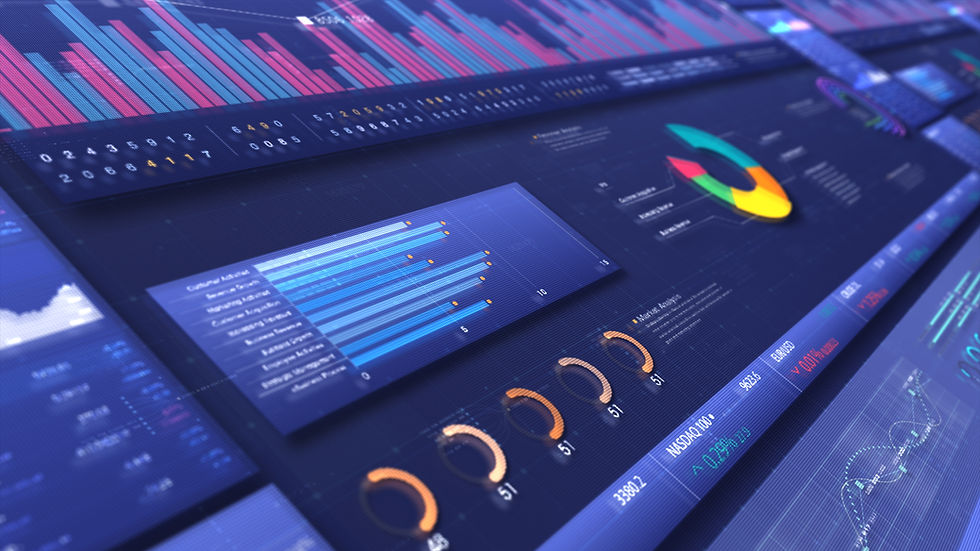Predicting Recessions
- Rick Haskell

- 5 days ago
- 3 min read
I often hear about fears of recession and how it will affect loan performance. Having worked in a risk management capacity through the Dot.com recession of 2001, The Great Recession of 2009, and now the Covid Recession of 2020, certain lessons have been learned, and I thought I’d share some of them here.
One thing for sure is that recessions are very difficult to predict. The unemployment rate is typically strong heading into a recession and turns for the worse as a lagging indicator, so there is not much help there. Increases in Jobless Claims seem to track more directly with recessions, but even then it doesn’t seem to be a leading indicator.
US GDP of course is something to monitor. Many use the rule of thumb that when you have two consecutive quarters of negative GDP, you are in a recession. Another definition is 2 negative quarters out of 3.
The following chart shows annual GDP, however quarterly GDP is the best to monitor. Suffice it to say that when GDP is steadfastly looming around 1% to 2%, you’d better be on your guard.
Why Does it Matter?
As consumers, we are all impacted by recessions of course. Employers tighten up to weather the storm, and we all have to tighten our budgets as a result. In more extreme cases layoffs are a sad reality. Recessions are just something you endure, and for many, survive.
For lenders, recessions will absolutely take cumulative net losses (CNLs) higher, and that means less profit margin. For subprime lenders, it might drive CNLs up so high that net profits go well into the negative. And this is why it’s important to “attempt” to predict when the next recession will occur.
External Vs. Internal Predictors
I’ve already touched on some of the external factors you should monitor. But now I want to draw your attention to one internal factor that’s right under your nose, and just might be the most predictive indicator of all.
Lenders often monitor their 30+ days past due delinquency (DQ) as a benchmark of performance, and when 30+ DQ starts to rise, there can be many driving factors, one being the ever-shifting state of the economy. But more likely 30+ DQ is being manipulated by a lender’s own doing—things like strategically changing score caps, modifying rules in one’s underwriting policy, pricing changes causing adverse selection, and a myriad of other causes that can cause delinquency to rise.
We need to remove the bias caused by our own manipulations so we can isolate the macroeconomy’s impact alone. And to do this, rather than focus on 30+ DQ, I like to study a lender’s percentage of “Current” accounts (i.e., zero days past due).
The Zero Days Past Due Indicator
The portion of a lender’s portfolio that is current at any given time largely reflects the natural state of the economy. These accounts get little to no lender-coercion to make payments because these consumers have been making payments of their own free will. In my view, this makes the 0% DQ indicator a great benchmark for measuring the economy.
Of course in prime credit portfolios, this probably doesn’t work so well because so much of the portfolio is always current. Watching it drift from 97% during good times to 95% during bad times doesn’t give you much to go on. But in subprime portfolios, you may see the “Current %” running as low as 50% during recessionary periods, and as high as 80% during the best economies. And as this drifts from one end of the spectrum to the other, it’s typically a slow-moving migration, hopefully giving you advance notice as you are watching it worsen or improve over time.

Summary
Assuming you have the historical data, I would urge you to create a chart similar to the one above based on your own loan portfolio. Pay attention to the best and worst seasonal data points each year (typically around Easter and Christmas if you are plotting on monthlies). I like to mark the tips with A, B, C, etc. to really see how the economy is trending since you are comparing seasonal trends year-over-year, and I start again at “A” after a period of recovery has ended, and the trend starts worsening once again (i.e., heading once again toward recession).
And when this chart indicates the next recession is looming (e.g., most of 2007), it’s time to tighten-up your buying guidelines to protect those profit margins.
.png)



